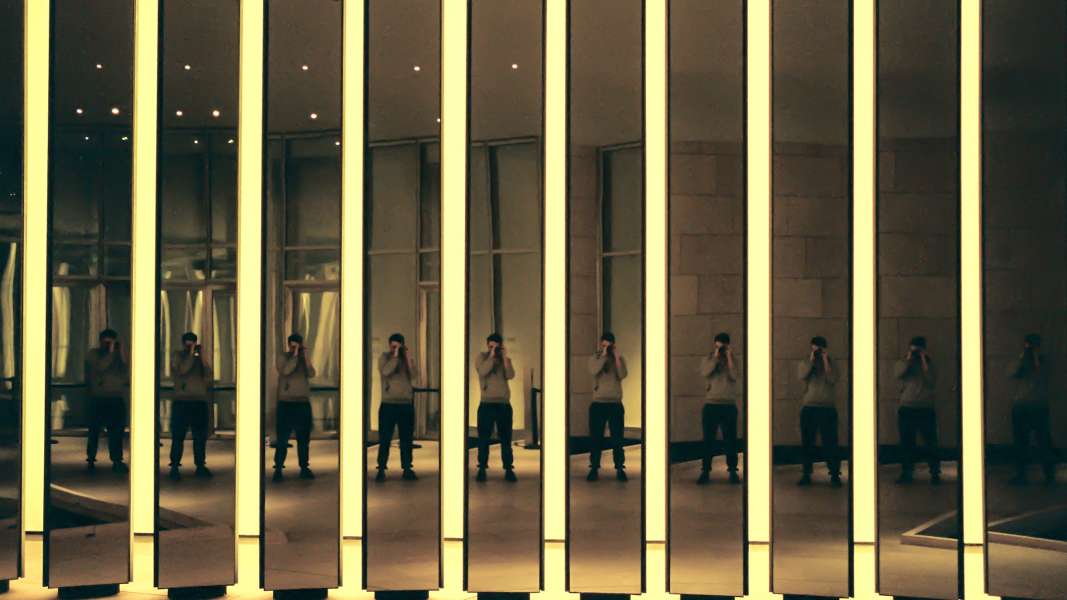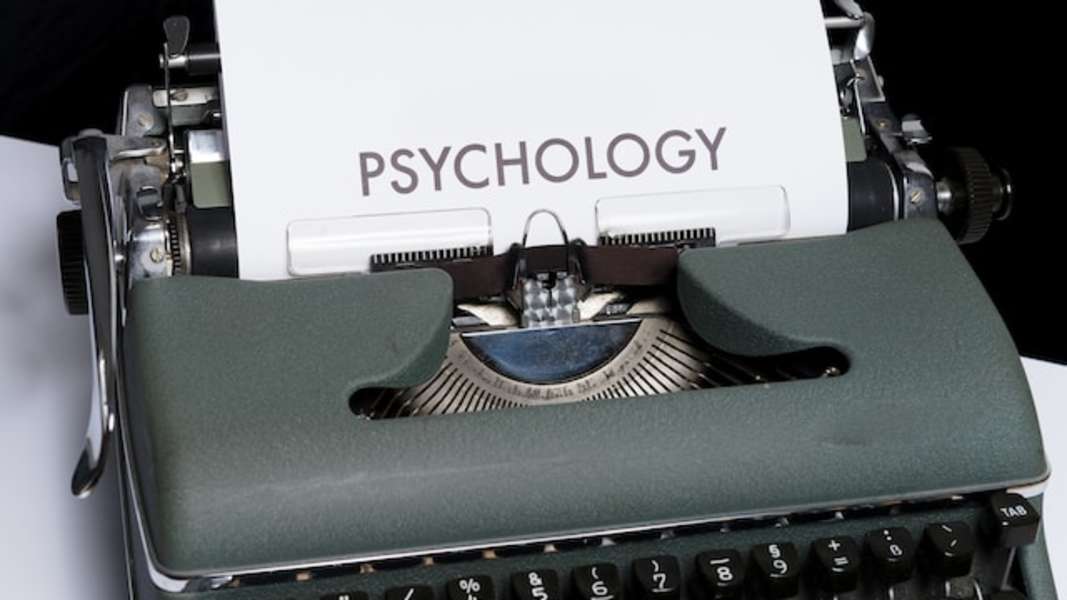
Different Personality Tests To Use In The Workplace
May 25, 2023

People have been interested in identifying and understanding personality and individual differences for centuries. When it comes to recruitment, personality assessments were first used in military settings during World War I to predict how soldiers would cope when faced with pressurized working conditions.
Nowadays, personality tests and questionnaires are commonplace in the hiring process. Personality tests are often used to gauge an applicant’s attitudes and behaviors in the workplace.
Workplace personality test results offer employers an insight into how well an applicant works in a team, how they react to stressful situations and how they interact with others.
Hiring managers often use personality tests to help them decide whether a candidate will likely be a good fit for the organization’s culture and vision.
In this article, you can learn about some of the most popular types of personality tests and how they could help you to hire the best talent for your organization.
1. HEXACO
This 100-question quiz asks respondents to rank statements on a scale from strongly disagree to strongly agree. Test takers must rank statements such as “I enjoy going for regular walks” or “I enjoy watching TV”.
Organizations can use this test alongside other aptitude tests or soft skills tests. It is a useful format for team-based roles, as it covers a broad range of aptitudes, skills and topics.
The HEXACO personality test defines a job applicant’s personality characteristics, helping hiring managers better understand how they will approach their work.
HEXACO is an acronym for the following six major dimensions of personality:
- Honesty-Humility
- Emotionality
- eXtraversion
- Agreeableness (versus Anger)
- Conscientiousness
- Openness to Experience
Each personality dimension can be broken down into four traits, enabling hiring managers to gain a more nuanced interpretation of an applicant’s personality profile.
Examples of these traits from the Neuroworx version include Authenticity (Honesty-Humility), Stress Tolerance (Emotionality), Team Orientation (eXtraversion), Compassion (Agreeableness), Self Discipline (Conscientiousness) and Curiosity (Openness to Experience).
The Neuroworx model features 24 subscales, which can be used to measure these traits. Each subscale has three statements, which have been written to help candidates feel comfortable and confident to respond honestly when asked about their personality in the context of work.
At the end of the test, the results are analyzed by a computer. Candidates are presented with scores for the six domains and the 24 subscales.
2. Myers-Briggs Type Indicator (MBTI)
The Myers-Briggs Type Indicator, also known as the 16 personalities test, is an adaptation of the Jung personality test. There are other variations of the MBTI, but 16 personalities is the most popular version.
The MBTI is a very popular free-of-charge personality test. Test results are used to classify respondents into four categories:
- Introversion or extraversion
- Sensing or intuition
- Thinking or feeling
- Judging or perceiving
A candidate’s test results are displayed as a four-letter acronym indicating their dominant personality trait for each category. There are 16 possible combinations.
Hiring managers can access additional information on each combination, which outlines a candidate’s likely drivers, strengths, weaknesses, perspectives and habits.
Many organizations use the MBTI to identify candidates that are a good fit for company culture. It can also be used to highlight the most effective collaborative workers in the candidate pool.
3. Enneagram
Enneagram tests are designed to establish how well an individual matches the nine enneagram personality types:
- Type 1 - The Reformer or Perfectionist
- Type 2 - The Helper or Giver
- Type 3 - The Achiever or Performer
- Type 4 - The Individualist or Romantic
- Type 5 - The Investigator or Observer
- Type 6 - The Loyalist or Loyal Skeptic
- Type 7 - The Enthusiast or Epicure
- Type 8 - The Challenger or Protector
- Type 9 - The Peacemaker or Mediator
There are a few different versions of the enneagram test. The standard version includes statement prompts, which test takers must rate from inaccurate to accurate, according to how much they agree with them.
Enneagram tests contain approximately 105 questions. The test usually takes between 10 and 15 minutes to complete.
Here are some example questions:
- I strive to be helpful to other people
- I really want other people to like me
- I feel my emotions very deeply
- I am prepared for any disaster
- I see the positive in every situation
Candidate results are presented as a numerical value for each of the nine personality types alongside an enneagram chart. This is often color-coded to show the candidate’s highest and lowest ranking results for each personality type.
4. Big 5 OCEAN
The Big 5 OCEAN test asks test takers to rank the accuracy of statements on a scale of “strongly agree” to “strongly disagree”.
It is designed to assess the “big five” personality traits, which are often referred to as OCEAN or CANOE. These are:
- Openness
- Conscientiousness
- Extroversion
- Agreeableness
- Neuroticism
The test is made up of statements such as:
- I consider myself to be talkative
- I consider myself to be someone who does a thorough job
- I consider myself to be reserved
- I consider myself to be somewhat careless
- I am curious about many different things
At the end of the test, respondents are presented with results that describe whether they are:
- Conscientious or disorganized
- Close-minded or open to new things
- Extroverted or introverted
- Agreeable or disagreeable
- Nervous and highly strung or relaxed and calm
Test results also include a percentile score for each personality type and a summary of the significance of scoring low or high in each category.
5. DiSC
The DiSC test is a popular workplace assessment tool. It is often used as a career test, but it can also be used to assess personality in informal settings.
In this test, personality is split into four quadrants:
- Dominance
- Influence
- Steadiness
- Conscientiousness
During the quiz, respondents are presented with a range of scenarios based on typical everyday social situations.
The DISC test usually contains around 28 sets of four statements and takes approximately 10 minutes to complete. Test takers must read the four statements before choosing the one that is most like them and the one that is least like them.
Here are some example descriptions:
Set 1:
- I usually do as I’m told
- I prefer things to be kept neat and today
- I don’t allow other people to put me down
- I enjoy having fun
Set 2:
- I have respect for my elders and people in authority
- I’m willing to take risks and try out new things
- I’m confident things will go well
- I’m always willing to help other people
Set 3:
- I am always helpful to other people
- I avoid tempting fate
- I don’t give up on things easily
- People enjoy spending time with me
Candidate results from the DISC test can be used to learn more about an individual’s interpersonal style, team working skills and workplace relationships.
6. Drives Test
The Drives test is designed to offer insight into what motivates an individual to perform to the best of their ability at work.
It is based on Hackman and Oldman’s Job Characteristics Model, created to help employers understand employee engagement, satisfaction, performance and turnover.
The Job Characteristics Model is made up of five core job characteristics:
- Skill variety
- Task identity
- Task significance
- Autonomy
- Feedback
With the right levels of each characteristic, an employee will be well-motivated to put in their best performance at work. This means the employee enjoys higher levels of employee satisfaction and the employer reaps the rewards of high performance.
Using the Drives test allows employers to find out whether they can offer job opportunities that will allow candidates to perform to the best of their ability. It prevents applicants being hired into positions they won’t enjoy, and it stops employers from hiring people that they will find it difficult to keep motivated.
You can use the Drives test to find candidates that will be engaged with their work, enjoy their role and stay in employment for a long period of time.
The Drives test is unique because it helps to identify soft skills and how a person might perform in the role. It works best when it is used alongside other types of pre-employment assessment.
7. Interest Inventory
The Interest Inventory assessment helps hiring managers find out what type of work environments a prospective employee will thrive in and what activities they most enjoy.
This assessment is based on Holland’s RIASEC model, a popular, widely-accepted theory in personality assessment. The RIASEC model mentions the following six core vocational interests:
- Realistic
- Investigative
- Artistic
- Social
- Enterprising
- Conventional
Interest inventories work on the basis that people are more likely to pursue career development opportunities and create better work output if they are interested in their day-to-day work.
Feeling motivated at work also means that they are more likely to stay in the job for a longer period of time, which helps to reduce employee turnover.
Interest inventories and assessments are helpful for students and people at an early stage of their career journey. Results can be used to identify what type of work would bring them the most job satisfaction.
8. Who Am I?
The WhoAmI? assessment is an advanced personality test from VisualDNA. Based on the OCEAN (Big 5) personality model, it helps test-takers better understand their level of conscientiousness, extraversion, agreeableness and neuroticism and how open they are to embark on new experiences.
This free test is unique as it is image-based. Test-takers are asked a question, shown a series of images and asked to select the one that best represents their answer.
Test results are presented in an easy-to-read format with detailed information on the test-taker's personality type. A percentage is given for each of the five personality dimensions.
9. Emotional Intelligence Test
This type of test is used to measure a candidate’s emotional stability, particularly when faced with stressful situations and group scenarios.
The questions are designed to measure how high or low the test-taker's emotional quotient (EQ) is.
EQ is a hot topic in hiring - research has identified that 59% of employers would not be willing to hire a candidate with a high IQ but a low EQ, while 75% of organizations said they would be more likely to offer promotion opportunities to an employee with a high EQ.
Candidates taking an emotional intelligence test will be asked to rank statements as either strongly agree, agree, neither agree nor disagree, disagree or strongly agree.
Here are some examples of the type of statements you might see on an emotional intelligence test:
- When I am criticized, I do not become defensive
- I take criticism and feedback on board and use it for personal growth
- I am a positive person
- I make an effort to see situations from other people’s perspectives
- I find it easy to admit when I have made a mistake
Emotional intelligence tests are useful when hiring candidates for a variety of people-facing job roles, including nursing, social work and sales.
Read our white paper “How To Assess Emotional Intelligence At Work” to discover the numerous benefits of assessing and nurturing emotional intelligence among your workforce.
10. The High5 Test
The High5 Strengths Test is another free online assessment. It is designed according to the principles of positive psychology and can be used to help people gain a better understanding of their unique personality and strengths.
The High5 test assesses 20 different strengths split into four domains - doing, feeling, motivating and thinking.
At the end of the test, candidates are allocated a strength profile, which provides an overview of their main strengths. A more detailed report is available in exchange for a fee.
The High5 test takes around 20 minutes to complete. It is made up of 100 questions, which must be marked using a sliding scale from strongly disagree to strongly agree.
Choosing the right personality test
When recruiting talent into your organization, you will seek candidates with specific personality traits, competencies, work ethics and characteristics.
Using personality assessments helps determine which applicants are most likely to be a good match for the vacant job.
However, there is no “one size fits all” option when it comes to personality tests. Choosing the right personality test is vital, as what works for one job vacancy will not be appropriate for another. And with so much information about personality tests available online, it can be difficult to narrow down the options.
When choosing a personality test, the most important consideration is ensuring it is scientifically validated. Always check out when the study was conducted, what sample size was used, and the representativeness of the study’s subject.
If this information isn’t easy to obtain, try to find tests certified by a recognized scientific body.
Tests based on the Big Five personality model are created in line with Costa and McCrae’s Five Factor Model: Neuroticism Extraversion and Openness Personality Inventory (1992).
These tests are considered the “gold standard” for personality testing.
Tips for using personality tests in the workplace
Personality tests can be used in the workplace in several ways. They often form part of the pre-employment testing and hiring phases, but you can also use them to identify existing employees suitable for promotion opportunities.
Managers can also use personality testing to learn more about their teams, adjusting their leadership style accordingly.
Here are some tips on how to use personality tests in the workplace.
1. Ask applicants to complete personality tests at the start of the hiring process
Using personality testing at an early stage will help to eliminate unsuitable candidates prior to the time-consuming interview phases.
2. Frame interview questions around personality test results
When it comes to the formal interviewing phase, managers can use personality test results to write behavioral interview questions.
3. Use personality tests alongside other skills tests
Personality tests should only form part of the recruitment decision. Choosing other skills tests to use alongside personality testing helps managers gain an accurate applicant profile.
4. Consider the legal implications
It is vital that you never choose to hire or fire a staff member because of their personality test results. Although personality is not a protected class, it could be considered stereotyping, leading to legal implications for the organization.
Final thoughts
80% of Fortune 500 companies use personality tests, and many other organizations also use them as part of the hiring process.
Personality tests aim to help the employer learn more about a candidate’s work preferences and team working style.
This information can be used to help decide whether a candidate is likely to be a good fit for the job role and organizational culture.
However, it is important to note that a personality test does not offer a full picture of the candidate. Personality tests should be used alongside other forms of assessment during the hiring process.
Personality testing can also be a helpful tool post-hire. Test results can be used to help team members and managers to gain a better understanding of each other’s ways of working, allowing them to work efficiently together.
Sign up for a free trial to explore the different types of personality tests available at Neuroworx and learn how our products could help you hire better.
Boost your hiring power.
Start using Neuroworx today.
Talk is cheap. We offer a 14-day free trial so you can see our platform for yourselves.
Try for free




